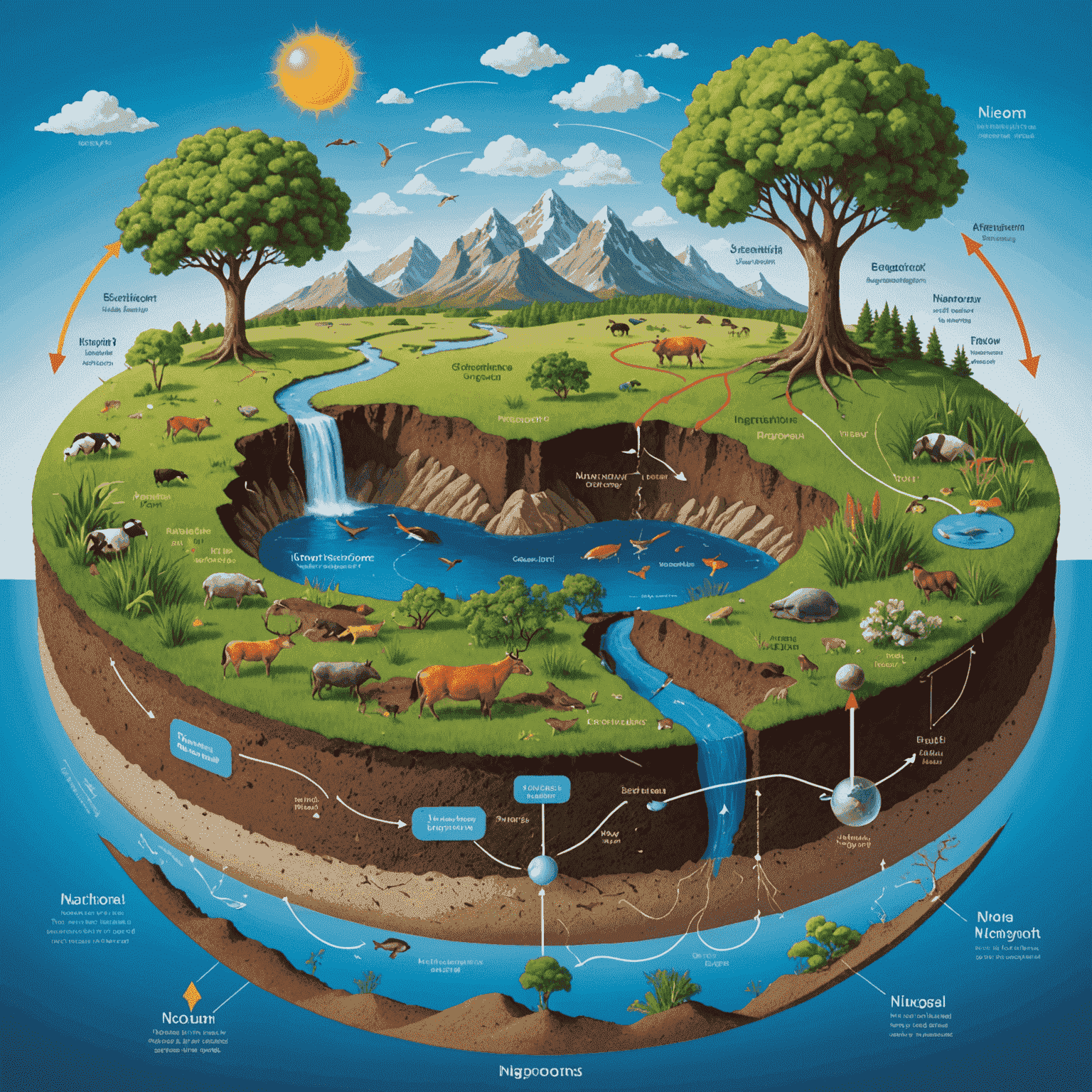The Nitrogen Cycle: Nature's Hidden Powerhouse

In the grand tapestry of life on Earth, few processes are as crucial yet as often overlooked as the nitrogen cycle. This remarkable system, operating silently beneath our feet and in the air we breathe, is the unsung hero of our planet's ecosystems.
The Basics of the Nitrogen Cycle
At its core, the nitrogen cycle is nature's way of recycling this essential element, making it available to living organisms in forms they can use. Nitrogen, constituting about 78% of our atmosphere, is paradoxically unavailable to most life forms in its gaseous state. The cycle transforms this abundant yet inaccessible element into compounds that sustain life.
Key Stages of the Cycle
- Nitrogen Fixation: The conversion of atmospheric nitrogen into ammonia, primarily by specialized bacteria.
- Nitrification: The oxidation of ammonia into nitrites and then nitrates by soil bacteria.
- Assimilation: The uptake of nitrogen compounds by plants and their incorporation into organic molecules.
- Ammonification: The conversion of organic nitrogen back into ammonia when organisms die and decompose.
- Denitrification: The reduction of nitrates back into atmospheric nitrogen, completing the cycle.

The Crucial Role in Ecosystems
The nitrogen cycle is not just a biochemical process; it's the lifeblood of ecosystems. It enables:
- Plant growth and development
- Protein synthesis in all living organisms
- Soil fertility and agricultural productivity
- Biodiversity in both terrestrial and aquatic environments
"Understanding the nitrogen cycle is like decoding nature's own language of life and growth."
Human Impact and Environmental Concerns
While the nitrogen cycle is a natural process, human activities have significantly altered its balance. Excessive use of nitrogen-based fertilizers, industrial emissions, and changes in land use have led to:
- Eutrophication of water bodies
- Soil acidification
- Increased greenhouse gas emissions (nitrous oxide)
- Loss of biodiversity in sensitive ecosystems

Innovations and Solutions
Scientists and environmentalists are working on various fronts to mitigate the negative impacts on the nitrogen cycle:
- Precision agriculture techniques to optimize fertilizer use
- Development of enhanced efficiency fertilizers
- Promotion of cover crops and crop rotation to naturally enrich soil nitrogen
- Wetland restoration to act as natural nitrogen filters
Conclusion: A Call to Curiosity
The nitrogen cycle, in its complexity and importance, embodies the intricate balance of nature. As we continue to unravel its mysteries, we gain not only scientific knowledge but also a deeper appreciation for the delicate systems that sustain life on our planet. Understanding this cycle is crucial for addressing current environmental challenges and ensuring the health of our ecosystems for future generations.
By delving into the nitrogen cycle, we open our eyes to a world of microscopic processes with macroscopic impacts. It reminds us that in nature, everything is connected, and even the smallest changes can have far-reaching consequences. As stewards of our environment, our challenge is to align our practices with these natural cycles, fostering a sustainable and thriving planet for all life forms.